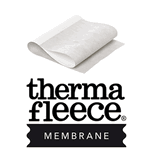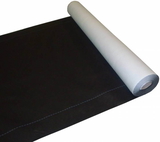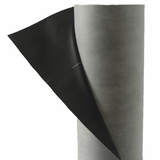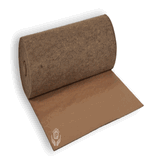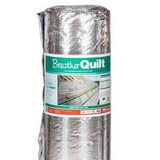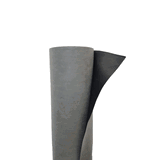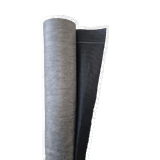- Blogs
- Breather Membrane Insulation: A Guide to Protect Your Building from Moisture and Heat Loss
Breather Membrane Insulation: A Guide to Protect Your Building from Moisture and Heat Loss

If you are looking for a way to improve the thermal performance and moisture management of your building, you might want to consider using breather membrane insulation. Breather membrane insulation is a type of insulation that consists of a vapour-permeable membrane that is installed on the outer side of the building envelope, such as the roof or the wall.
Breather membrane insulation allows excess water vapour to escape from inside the building while preventing rain, snow, wind and dust from entering. This way, breather membrane insulation helps to keep the building dry, warm and comfortable.
In this article, we will explain what breather membrane insulation is, how it works, what are its benefits and how to install it properly. We will also provide some tips on how to choose the best breather membrane insulation for your project.
What is Breather Membrane Insulation?
Breather membrane insulation is a type of insulation that combines a vapour-permeable membrane with a layer of thermal insulation. The vapour-permeable membrane, also known as a breather membrane or a breathable membrane, is a thin sheet of material that has tiny pores that allow water vapour molecules to pass through but block larger particles such as water droplets and dust. The thermal insulation layer can be made of various materials, such as mineral wool, glass wool, cellulose, wood fibre or foam.
Breather membrane insulation is usually installed on the outer side of the building envelope, such as the roof or the wall. The breather membrane acts as a secondary protection layer that covers the thermal insulation layer and prevents it from getting wet or damaged by external factors. The thermal insulation layer provides thermal resistance and reduces heat loss through the building envelope.
Breather membrane insulation can be used in various types of buildings, such as residential, commercial or industrial. It can also be used in different types of construction systems, such as timber frames, steel frames, masonry or SIPs (structural insulated panels).
One example of a breather membrane insulation product is the DuPont Tyvek Housewrap, which is a high-performance vapour-permeable membrane that is suitable for timber frame and steel frame walls. It has a vapour resistance of 0.015 MNs/g, a water resistance of >2500 mm and an air permeability of 55 m³/m²h. It also has a fire rating of class E according to EN 13501-1.
Another example of a breather membrane insulation product is the Novia Ultra Plus Breather Membrane, a premium choice for roof and wall protection. This 3-layer laminate with a microporous core offers exceptional breathability, safeguarding against moisture and condensation. With a thermal conductivity of 0.018 W/mK, thickness ranging from 25-150 mm, and weighing 95GSM, it's the lightweight yet robust solution you need. CE-approved and boasting a fire rating of class B-s1, d0 according to EN 13501-1, it's the go-to breather membrane for peace of mind in your construction projects. Dimensions: 1.5m x 50m per roll, covering 75 sqm. Your all-in-one choice for durability and energy efficiency.
Breather Membrane Insulation
How Does Breather Membrane Insulation Work?
Breather membrane insulation works by creating a balance between air tightness and vapour permeability. Air tightness refers to the ability of a building envelope to prevent air leakage, which can cause heat loss and energy inefficiency. Vapour permeability refers to the ability of a building envelope to allow water vapour to escape from inside the building, which can prevent condensation and mould growth.
Breather membrane insulation achieves air tightness by creating a continuous and sealed layer that covers the thermal insulation layer and prevents air infiltration. This way, breather membrane insulation improves the thermal efficiency and comfort of the building.
Breather membrane insulation achieves vapour permeability by allowing water vapour molecules to diffuse through the tiny pores of the breather membrane. This way, breather membrane insulation reduces the risk of condensation and moisture accumulation within the building envelope.
By combining air tightness and vapour permeability, breather membrane insulation creates a healthy and durable building environment that can cope with changes in temperature and humidity.
What are the Benefits of Breather Membrane Insulation?
Breather membrane insulation offers several benefits for both the building and its occupants. Some of these benefits are:
- Improved thermal performance: Breather membrane insulation reduces heat loss through the building envelope by providing thermal resistance and preventing air leakage. This can lower the energy consumption and carbon footprint of the building, as well as reduce the heating and cooling costs.
- Enhanced moisture management: Breather membrane insulation prevents moisture problems within the building envelope by allowing water vapour to escape and preventing rainwater ingress. This can prevent structural damage due to rotting timber, corrosion or rusting metal, as well as improve the indoor air quality by preventing mould growth and allergens.
- Increased fire safety: Breather membrane insulation can improve the fire safety of the building by providing a fire-resistant barrier that can slow down or stop the spread of flames. Some breather membranes are also self-extinguishing or non-combustible, which means they do not contribute to fire development or smoke production.
- Easy installation: Breather membrane insulation is easy to install as it does not require any special tools or skills. It can be cut to size and shape with scissors or a knife, and fixed with staples, nails or screws. It can also be installed in any weather condition, as it is not affected by temperature or humidity.
- Versatile application: Breather membrane insulation can be used in various types of buildings and construction systems, as it is compatible with different materials and designs. It can also be used in different parts of the building envelope, such as roofs, walls or floors.
How to Install Breather Membrane Insulation Properly?
To ensure that breather membrane insulation performs effectively and efficiently, it is important to install it properly according to the manufacturer’s instructions and best practices. Here are some general guidelines on how to install breather membrane insulation:
- Choose the right breather membrane insulation: Before installing breather membrane insulation, you need to choose the right type and size of breather membrane and thermal insulation for your project. You need to consider factors such as the climate, the building design, the construction system, the U-value requirement, the fire rating and the budget. You can consult with a professional or use an online calculator to help you make the right decision.
- Prepare the surface: Before installing breather membrane insulation, you need to prepare the surface where you will apply it. You need to make sure that the surface is clean, dry, smooth and free of any sharp objects or protrusions that could damage the breather membrane or the thermal insulation. You also need to remove any existing insulation or membranes that could interfere with the performance of the breather membrane insulation.
- Install the thermal insulation layer: After preparing the surface, you need to install the thermal insulation layer on the inner side of the building envelope. You need to cut the thermal insulation to fit the dimensions of the surface and fix it securely with staples, nails or screws. You need to make sure that there are no gaps or overlaps between the pieces of thermal insulation, as this could create thermal bridges or air leaks that could reduce the effectiveness of the insulation.
- Install the breather membrane layer: After installing the thermal insulation layer, you need to install the breather membrane layer on the outer side of the building envelope. You need to cut the breather membrane to fit the dimensions of the surface and fix it securely with staples, nails or screws. You need to make sure that there are no gaps or overlaps between the pieces of the breather membrane, as this could create moisture problems or air leaks that could reduce the effectiveness of the membrane. You also need to seal all joints and edges of the breather membrane with tape or adhesive to ensure air tightness and vapour permeability.
- Install the final covering layer: After installing the breather membrane layer, you need to install the final covering layer on top of it. This could be tiles, slates, shingles, cladding, plasterboard or any other material that suits your project. You need to follow the manufacturer’s instructions and best practices on how to install the final covering layer correctly and safely.
How to Choose the Best Breather Membrane Insulation for Your Project?
To choose the best breather membrane insulation for your project, you need to compare different options and evaluate them based on various criteria. Some of these criteria are:
- Vapour resistance: Vapour resistance is a measure of how much water vapour can pass through a material. It is expressed in units of MNs/g (mega newton seconds per gram). The lower the vapour resistance, the more vapour-permeable the material is. For breather membranes, a vapour resistance of less than 0.6 MNs/g is considered breathable.
- Water resistance: Water resistance is a measure of how much water can penetrate a material. It is expressed in units of mm (millimetres). The higher the water resistance, the more water-repellent the material is. For breather membranes, a water resistance of more than 1000 mm is considered waterproof.
- Air permeability: Air permeability is a measure of how much air can flow through a material. It is expressed in units of m³/m²h (cubic metres per square metre per hour). The higher the air permeability, the more air-open the material is. For breather membranes, an air permeability of more than 50 m³/m²h is considered air permeable.
- Thermal conductivity: Thermal conductivity is a measure of how well a material can transfer heat. It is expressed in units of W/mK (watts per metre per kelvin). The lower the thermal conductivity, the more thermally insulating the material is. For thermal insulation materials, a thermal conductivity of less than 0.04 W/mK is considered low.
- Thickness: Thickness is a measure of how thick a material is. It is expressed in units of mm (millimetres). The thinner the material, the less space it occupies and the easier it is to install. For breather membranes, a thickness of less than 1 mm is considered thin. For thermal insulation materials, a thickness of less than 100 mm is considered thin.
- Weight: Weight is a measure of how heavy a material is. It is expressed in units of kg/m² (kilograms per square metre). The lighter the material, the less load it puts on the structure and the easier it is to handle and transport. For breather membranes, a weight of less than 200 g/m² is considered light. For thermal insulation materials, a weight of less than 20 kg/m² is considered light.
- Fire rating: Fire rating is a measure of how well a material can resist fire. It is expressed in terms of classes or ratings, such as A1, A2, B, C, D, E or F, according to the European standard EN 13501-1. The higher the fire rating, the more fire-resistant the material is. For breather membranes, a fire rating of A1 or A2 is considered non-combustible or limited combustibility. For thermal insulation materials, a fire rating of A1 or A2 is considered high.
Based on these criteria, you can compare different options for breather membrane insulation and choose the one that best suits your project’s needs and specifications. You can also consult with a professional or use an online comparison tool to help you make the right decision.
Difference Between Breather Membrane Insulation and Other Types of Insulation?
Breather membrane insulation is a type of insulation that consists of a vapour-permeable membrane and a thermal insulation layer. It is different from other types of insulation in the following ways:
- Breather membrane insulation is installed on the outer side of the building envelope, such as the roof or the wall, while other types of insulation are usually installed on the inner side or between the layers of the building envelope.
- Breather membrane insulation allows water vapour to escape from inside the building while preventing rain, snow, wind, and dust from entering. Other types of insulation may not have this vapour-permeable property and may require additional ventilation or protection from moisture.
- Breather membrane insulation can improve the fire safety of the building by providing a fire-resistant barrier that can slow down or stop the spread of flames. Some other types of insulation may not have this fire-resistant property and may contribute to fire development or smoke production.
- Breather membrane insulation can be used in various types of buildings and construction systems, as it is compatible with different materials and designs. Other types of insulation may have specific applications or limitations depending on the building design and construction system.
Frequently Asked Questions
Q: What is breather membrane insulation?
A: Breather membrane insulation is a type of material that is used to protect buildings from moisture and heat loss. It acts as a barrier against water ingress while allowing water vapor to escape, keeping the building dry and preventing condensation.
Q: How does breather membrane insulation work?
A: Breather membrane insulation works by allowing water vapor to pass through it while blocking liquid water from entering the building. It is often used in roofing systems to provide both insulation and moisture protection.
Q: What are the benefits of using breather membrane insulation?
A: The benefits of using breather membrane insulation include: - Protection against moisture and condensation - Helps to maintain a comfortable indoor environment by reducing heat loss - Improves energy efficiency of the building - Allows the roof to "breathe" by allowing water vapor to escape - Easy to install and handle
Q: What is the difference between a breather membrane and a roof membrane?
A: A breather membrane is a type of roof membrane that is designed to be vapor permeable, allowing water vapor to escape while keeping liquid water out. On the other hand, a typical roof membrane may not have vapor permeability and is used to provide a waterproof barrier.
Q: Is Tyvek the only brand of breather membrane insulation available?
A: No, Tyvek is a well-known brand of breather membrane insulation, but there are many other brands available in the market. Some popular brands include Supro Breather Membrane, Cromar, and Glidevale Protect.
Q: Can breather membrane insulation be used for pitched roofs?
A: Yes, breather membrane insulation can be used for pitched roofs. It provides both insulation and moisture protection, making it an ideal choice for protecting pitched roofs from heat loss and moisture ingress.
Q: What factors should I consider when choosing breather membrane insulation?
A: When choosing breather membrane insulation, you should consider factors such as: - Vapour permeability: Ensure that the membrane allows water vapor to escape - Waterproofness: Choose a membrane that provides effective protection against liquid water - Ease of installation: Look for a membrane that is easy to handle and install
Q: Is breather membrane insulation reflective?
A: Some breather membrane insulation products are designed to be reflective, helping to reduce heat transfer and improve energy efficiency. However, not all breather membranes have reflective properties, so it is important to check the product specifications.
Q: Where can I find Supro Breather Membrane and other brands of breather membrane insulation?
A: Supro Breather Membrane and other brands of breather membrane insulation can be found at building supply stores, online retailers, and specialized roofing suppliers. It is important to choose a reputable supplier to ensure the quality and authenticity of the product. You can contact for best deals at our website Buy Insulation Online.
Q: Can breather membrane insulation be used as roofing felt or underlay?
A: Yes, breather membrane insulation can be used as roofing felt or underlay. It provides both insulation and moisture protection, making it a suitable alternative to traditional roofing felts and underlays.
Conclusion
Breather membrane insulation is a type of insulation that consists of a vapour-permeable membrane and a thermal insulation layer. It is installed on the outer side of the building envelope, such as the roof or the wall.
Breather membrane insulation improves the thermal performance and moisture management of the building by creating a balance between air tightness and vapour permeability. Breather membrane insulation also offers other benefits, such as fire safety, easy installation, and versatile application.
To install breather membrane insulation properly, you need to follow the manufacturer’s instructions and best practices. You also need to choose the right type and size of breather membrane and thermal insulation for your project. You need to consider factors such as the climate, the building design, the construction system, the U-value requirement, the fire rating and the budget.
We hope this article has helped you understand what breather membrane insulation is, how it works, what are its benefits and how to install it properly. If you have any questions or comments, please feel free to contact our experts at Buy Insulation Online. We are always happy to help.

Samuel Hitch
Managing Director
Buy Insulation Online.
Leave A Reply
Your feedback is greatly appreciated, please comment on our content below. Your email address will not be published. Required fields are marked *




